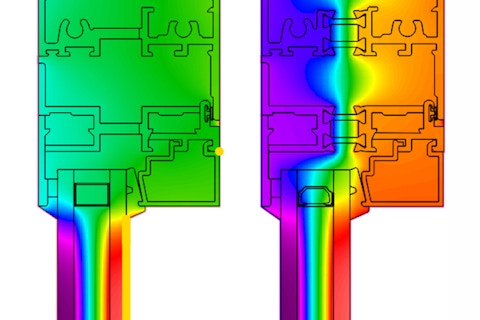
2021 Construction Forecast

2020 has been an unusual year, to say the least, presenting a challenge to those entities keen on clarifying what the near future may hold and how it may impact industry performance. Following is a sampling of what some of these entities are saying, with links to more information.
Engineering News-Record refers its forecast for 2021 as a “slow road to recovery.” While ENR was referring to construction, the phrase could also apply to the 2020 health crisis we have experienced due to COVID-19. The two seem to go hand in hand. Good news about vaccines and an economic stimulus package gives forecasters a reason for cautious optimism for growth in 2021, although some feel the stimulus may not be nearly enough.
According to Chief Economist Richard Branch, Dodge Data & Analytics, “We see slow growth continuing into the fourth quarter and quite frankly into the first three months of 2021.” Other findings include:
- an expected rebound of 4% in the value of construction in 2021 (after a decline of 14% in the dollar value of construction starts in 2020).
- a 1% drop in multifamily-housing starts (after a 14% decline in 2020).
- a 5% increase in the commercial sector (after a 23% drop in 2020). Branch notes, “It is going to be a long slow road back for the commercial sector.”
- a decline of 7% in hotel construction (after a 46% decline in 2020).
- a rebound of 7% in retail construction (after a 25% drop in the dollar value of retail starts in 2020). This is based largely on the influx of new homes in suburban areas.
- an 8% increase in warehousing (after an increase of 2% in 2020)
In other areas, Dodge reports that institutional construction starts should increase slightly, as well as healthcare starts as hospitals seek to improve in-patient bed counts.
Chief Economist Anirban Basu, Associated Builders and Contractors, forecasts a recession threat for the construction sector in 2021. He notes, “Commercial real estate is particularly on the outs because the majority of the American workforce has abandoned Class A office spaces for their homes. In fact, the negation of commutes, childcare concerns, and office distractions have meant that 37% of workers now complete their jobs entirely from home.” The question is, what will companies do after the pandemic?
CNN reported on several well-known companies that have indicated home offices will continue in the future. Dropbox’s nearly 3,000 employees will continue to work remotely the majority of the time, but will occasionally go to revamped offices, which will be called "Dropbox (DBX) Studios," for collaborative and team-building work. Facebook’s Mark Zuckerberg said as many as 50% of Facebook employees could be working remotely within the next five to 10 years, and Shopify’s CEO Tobi Lütke announced that it was transitioning to be a "digital-by-default" company. Even if the company reopens its offices in 2021, most employees will work remotely on a permanent basis.
The AIA Consensus Construction Forecast Panel—consisting of leading economic forecasters—projects spending on nonresidential facilities will decline 5% in 2021 (over a 2020 decline of 8%). The commercial building sector is expected to be the hardest hit, with spending projected to decline almost 8% in 2021 (over a decline of 12% in 2020). The industrial sector is expected to see a decline of 3% (over a 2020 decline of 5%). In addition, institutional buildings will likely see a 2% decline in 2021 (after a 2020 drop of 5%).
Market Segment Consensus Growth Forecasts |
2020 |
2021 |
Overall nonresidential building |
-8.1% |
-4.8% |
Commercial total |
-11.6% |
-8.4% |
Retail & other commercial |
-7.7% |
-7.2% |
Office space |
-11.1% |
-7.6% |
Hotel |
-20.5% |
-16.5% |
Industrial total |
-8.3% |
-3.3% |
Institutional total |
-4.5% |
-1.7% |
Public safety |
15.6% |
2.5% |
Healthcare facilities |
2.4% |
3.2% |
Education |
-6.6% |
-1.0% |
Religious |
-9.9% |
-5.9% |
Amusement/recreation |
-13.0% |
-11.9% |
The 2021 construction forecasts are certainly an improvement over 2020, but by all accounts, construction activity is likely to be slow in returning to pre-Covid figures. We don’t know for certain when the pandemic will end. We cannot assess the lasting changes from the pandemic experience. For instance, when will tourism and travel resume? Experience in the virtual realm has boomed during the pandemic; are these trends now a part of the permanent fabric of social interaction? Will workers return to office environments? Will the poor performance of senior living facilities during the pandemic spur rehabilitation and growth in this sector? At this point I think we all have more questions than answers. One thing is for sure, only time will tell the long-term effects of the Covid virus on the construction sector and our world.

Valerie Block
Facade Tectonics Institute
Looking for something specific?
Search our extensive library.
FTI’s SKINS email is the central source for the latest in building skin trends and research.
All emails include an unsubscribe link. You may opt out at any time. See our privacy policy.













